Tags
In March 27, 1689, Basho (Bashō, Basyo) Matsuo who was the Japanese poet (haiku) started off his travel to North Japan from Horikawa’s Saito-an (Saida-an) in Tokyo that was made in his travel sketch, “The Narrow Road to the Interior” (Oku no Hosomichi) later. “The narrow road to the interior” is one of the greatest masterpiece in Japanese literatures. So I went to the short trip in order to trace his journey on May 17th (his date was lunar calendar, the solar calendar’s date is that day). Saidaan was a small hermitage (reconstruction), and Basho’s statue expressing the figure of just starting his great journey.
Saida-an(Saito-an) is located near the river and it was easy to go to the north by boat, so I rode a special ship for the Basho’s tour from Onagi river. This river is a waterway from Sumida river to Nakagawa river that was constructed by Shirobee Onagi for the order of Shogun Ieyasu Tokugawa in 1590’s, so it is called his name “Onagi” river.
About one hour tour, I arrived at the small port at Kitasenjyu. Kitasenjyu is a North of used Senjyu where was the first Shukuba town of Nikko road and Ousyu road.
Basho made land at Kitasenjyu, and started his journey on foot.
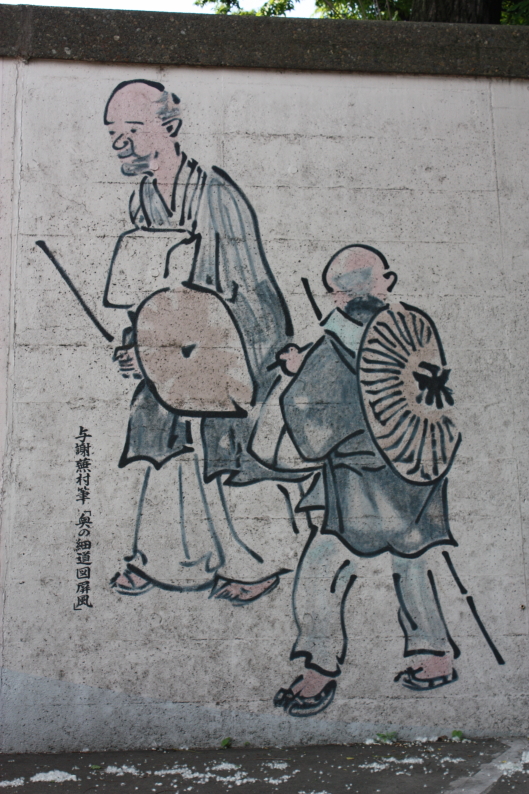
Basho and his pupil Sora started their journey. This was painted by Buson Yosa who was a famous poet.
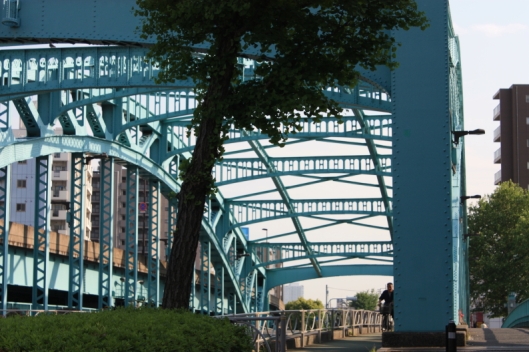
Senjyu Ohashi bridge. Originally it was constructed by the order Syogun Ieyasu Tokugawa in 1594. At that time, there was only this bridge at Sumida river, but after many people was killed not to escape the other side of the river by Meireki big fire in 1657, second bridge Ryogoku-bashi was made. This bridge used to be 130m length and 7.9m width, and 6 times repairing from 17th to 18th century and never broken in Edo period. In 1927, it changed from wood bridge to the iron bridge after the Great Kanto Earthquake of 1923.
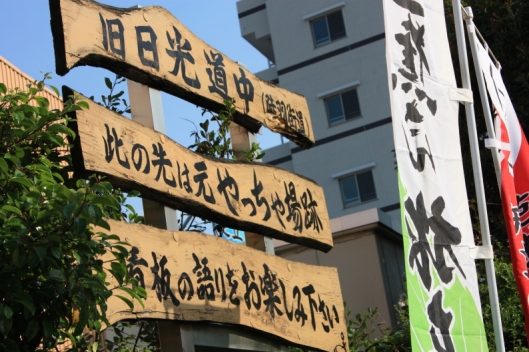
Basho started at Senjyu Yatate-Hajime. There is a vegetable market (Yacchaba) that was made in Edo period near the monument of Basho.

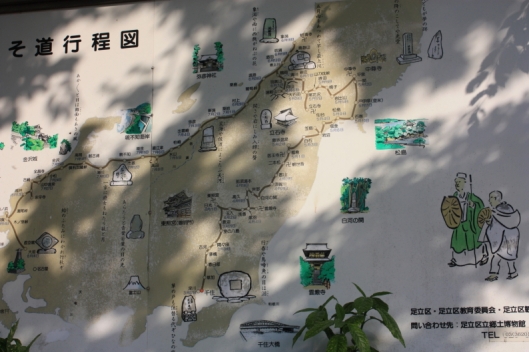
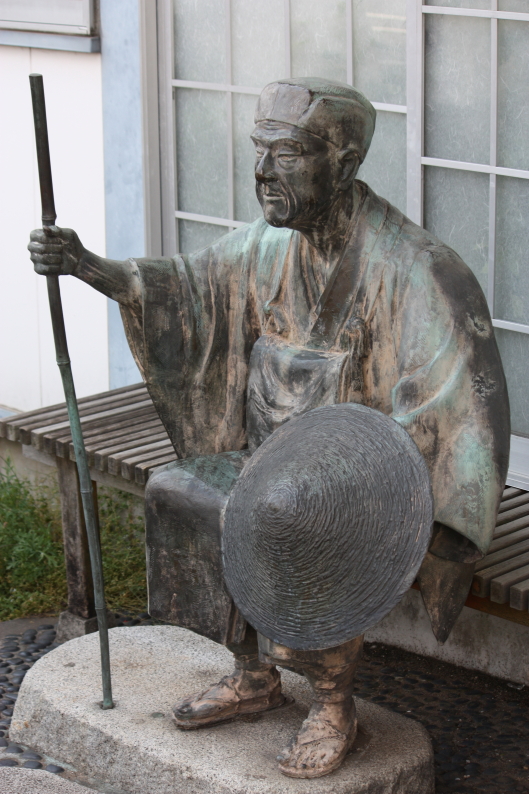
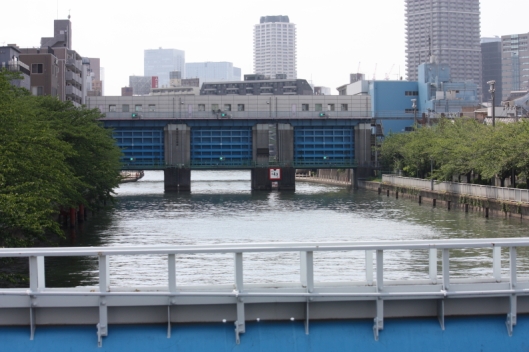
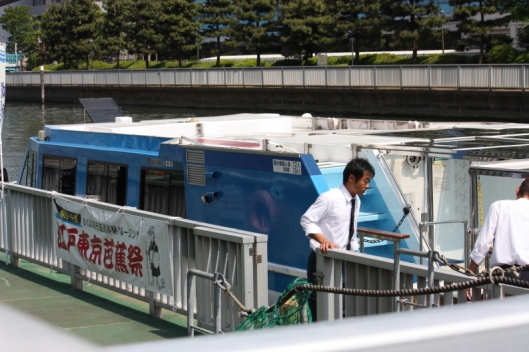
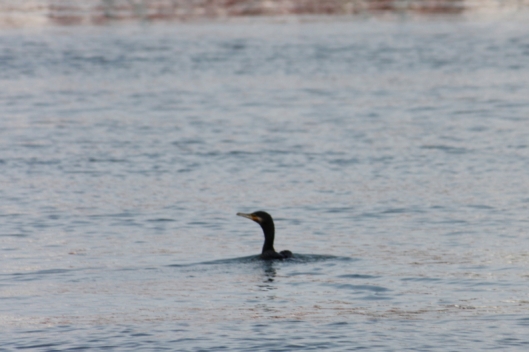
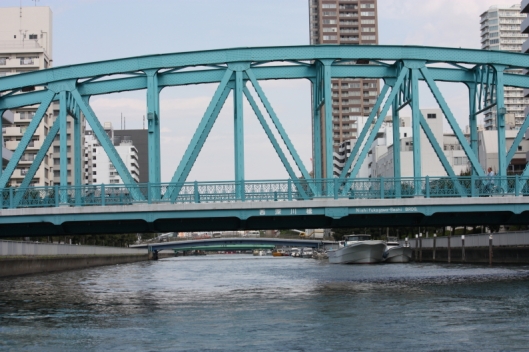
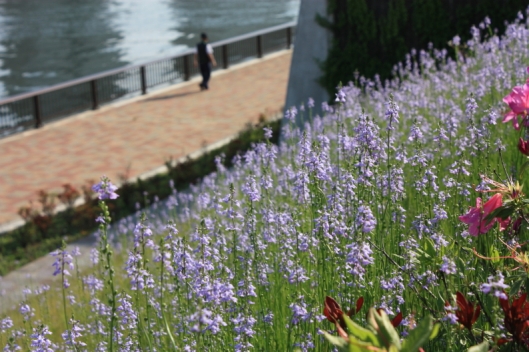
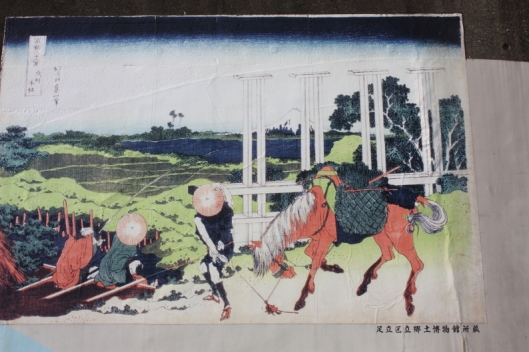
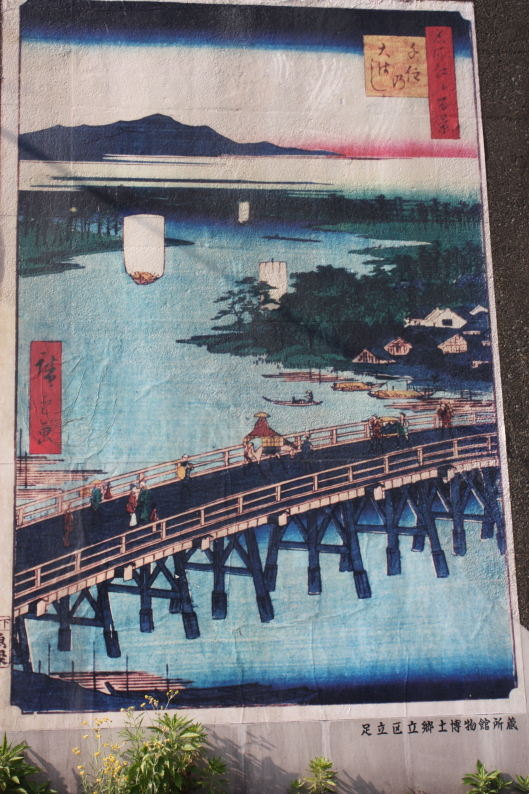
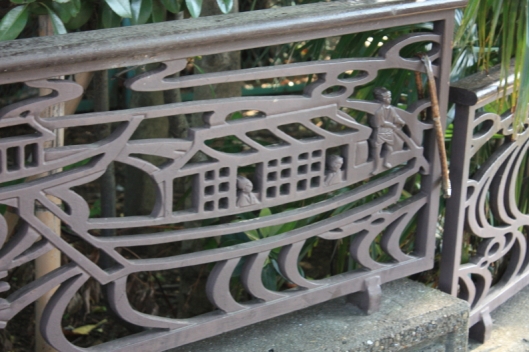
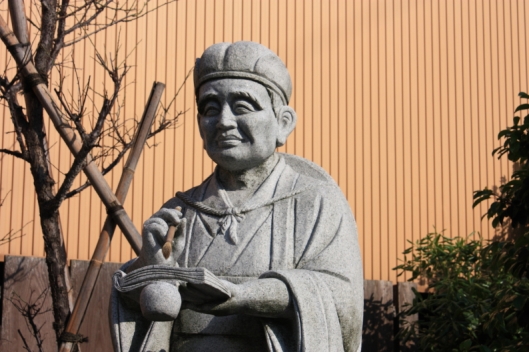
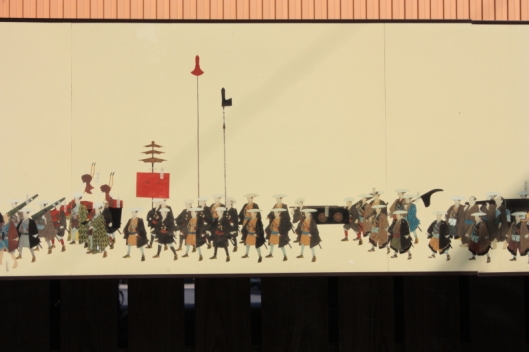
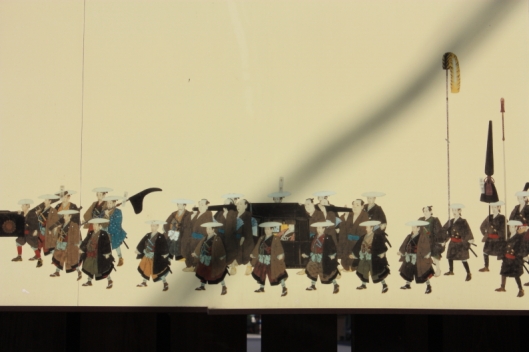
Thank you for all these interesting posts and beautiful pictures!
I nominated you for 3 awards
Thank you for nominating me! I’m very glad.
What a wonderful idea for a trip! Thank you for sharing your thoughts and photographs. Your posts are always so thoughtful and beautifully illustrated, and your command of English is far better than my grasp of Japanese! 🙂
Thank you for visiting my blog and your kind comment! For this trip, I traced Basho’s travel to go up the Sumida river. Although the scenes from the ship have been changing from Basho’s era, I felt the elation for the starting journey.
Your cormorant looks much like the ones here, Lovely pictures.
At first, something black appeared on the surface of the river. I doubted it might be Nessie of Tokyo:)
Pingback: Sumida river and many bridges, Tokyo « Myau Myau's photo gallery